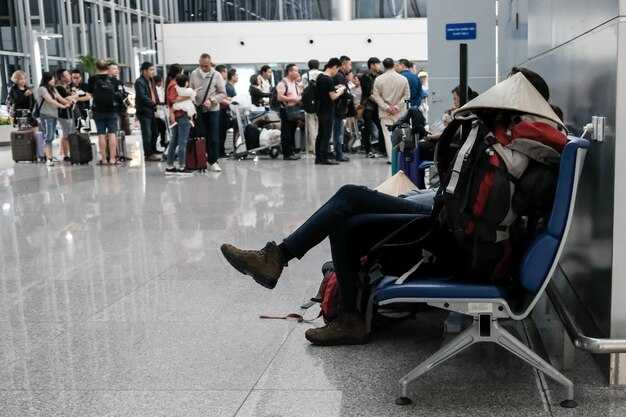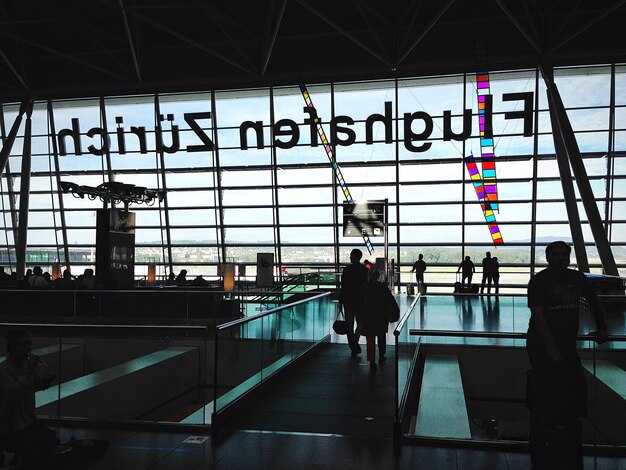
Start with a guide named peter at the entrance; these tours spotlight central operations, the path from entering to boarding, and the rhythm of airport life beyond the gates. You’ll see the building layout, where parking zones connect with check-in halls, and how staff coordinate departures and arrivals. Take notes on the differences between security checkpoints and operations floors; you’ll notice how teams keep the flow steady while travellers stay safe. Compare different zones to see how teams adapt. Stay close to the guide.
The tour options are provided by airport authorities or approved partners, with a menu of routes and durations. A short stop is scheduled at the midway point. Most airports offer 60–90 minute sessions; some hubs run two-hour back-to-back programs during peak times. Booking usually requires online registration, a valid ID, and a brief security briefing. Entering the tour area typically requires a pre-check and a scheduled window, and you’ll be assigned a position within a group to keep lines moving. Your name will be checked.
The top airports for this activity span Europe, Asia, and North America, with germany featuring Frankfurt and Munich tours that emphasize central operations, control rooms, and cargo handling. If you’re visiting germany, plan a morning tour that starts near the central security lanes, then follows the path toward the central terminal complex. The experience connects you with staff who explain how the building and maintenance teams stay in sync.
Practical tips to maximize value: pick a tour that matches your interest–maintenance bays, security corridors, or flight ops–so you don’t miss the parts you care about. Arrive early, check the meeting point position, and follow the entering requirements. If you need accessibility accommodations, notify the provider in advance; many operators adapt routes for wheelchairs and strollers. For families, ask about ideas for kid-friendly demonstrations and a quick look at the terminal’s menu at nearby cafés after the tour. You can take photos at approved spots.
How to book behind-the-scenes airport tours at leading hubs
Start by visiting the official airport tours page and filter for behind-the-scenes or special tours; click Book, and include a request for your preferred time. Early slots fill quickly, especially at hubs with developed advisory programs and health checks, so secure your spot as soon as you can.
Identify a hub that aligns with your interests–whether you want to see flights operations, customs processes, or the coordination between staff and security. For munich-based offerings, look for tours that highlight Bavarian logistics and the local team’s approach to managing peak periods; these programs often cross between terminal operations and baggage handling to give a complete view of daily operations.
Check eligibility requirements and health advisories on the airport site; many programs require a valid passport, a minor health fit, and sometimes a pre-appointment screening. If you have specific needs, use the request field to note them; airports frequently provide exemptions or alternate time slots for groups with unique requirements.
Prepare documents in advance and confirm the exact meeting point a few days before the tour. Have your staff or travel advisor confirm the booking details, including the exact security clearance needed, access restrictions, and whether a stamped ticket is issued for the walk-through sections. This helps you avoid delays and keeps the process smooth for everyone involved.
Consider the broader travel plan–tours are often offered in clusters around flight schedules and hotel check-ins, so align your booking with your flights and stay. If you’re traveling for a conference or a business event, ask about strategic group options that can include multiple colleagues and better seating or access arrangements.
Step-by-step booking
First, choose the hub and click Book for the behind-the-scenes option; next, select a date and time that fits your flights, then add any special notes or accessibility needs; finally, complete payment using your corporate or personal card and save the confirmation.
Second, verify the advisory notes and health prerequisites; if you need an exemption or alternative timing, contact the support team promptly rather than later to keep your slot.
What to expect on the tour
You’ll meet a dedicated team that coordinates cross-functional activities between operations, customs, and security staff; expect a concise briefing on safety, health, and visitor rules, followed by access to restricted areas relevant to the focus of the tour. Sessions typically last 60–90 minutes and may include demonstrations of screening equipment, baggage handling, and control room overviews.
Bring a valid photo ID and dress comfortably; cameras are usually allowed in designated areas, but you’ll follow strict guidelines–no flash near sensitive equipment. After the tour, you’ll receive a printed or stamped acknowledgment of participation and a summary of the key insights, useful for reference when planning future visits or hotel stays near the airport.
For travelers investing time in these experiences, the most value comes from understanding how the airport prioritizes safety and efficiency; a well-organized tour can inform future itineraries, especially when coordinating with hotels and transport options around busy hubs. If you’re going for a Bavarian perspective, look for tours with a clear exposure to munich’s regional standards and the local team’s approach to customer service, staffing, and ongoing investments in visitor programs.
What you should expect on a typical tour itinerary

Find the meeting point 15 minutes before the start and review the safety briefing with your guide to keep the tour on track and maximize what you’ll see.
The route covers these core zones in most tours: non-aeronautical spaces, robotics demonstrations, baggage systems, and active ramp operations, plus a look at control rooms and passenger-flow dashboards so you can connect the dots between touchpoints.
Distances between stops are shown on maps and explained by staff, with an average of 1.5–2.5 km of walking and few stairs; the pace stays steady and the guide adapts for accessibility when needed.
You enter restricted zones only under escort; paths are clearly marked, PPE is provided where required, and cameras are allowed in public areas by policy. Each stop emphasizes safety and clear instructions so passengers can stay aware and comfortable.
In metropolitan hubs around places like frankfurt-höchst near the squaire area, you’ll see growth in action: robotics labs, automated systems, and planning boards; these visits provide context on how routes, schedules, and non-aeronautical spaces connect to serve growth and customer needs, andor tours may include additional facilities as available.
Later, advisory staff review safety updates and answer questions; the plan remains flexible to weather, group size, and interests, ensuring a pleasant, informative experience for all.
Tips: wear comfortable shoes, bring a light jacket for cooler indoor spaces, and check ahead about accessibility options and camera policies; if you have passengers with mobility needs, tell the guide so the route towards the most comfortable sections can be prioritized, and you can call for adjustments if needed.
Key operations you’ll observe: baggage handling, security, and maintenance
Book a guided slot during morning hours to see three core airport operations in action, with staff coordinating across adjacent areas and real-time screens guiding the flow.
-
Baggage handling
- Throughput varies by airport size: large global hubs move about 7,000–9,000 bags per hour, while regional facilities handle 2,000–4,000 in the same period, enabling smooth lines toward gates.
- Conveyor systems, machines, and robotics sort bags along adjacent belts, with visible sensors tagging each item by destination and flight number from the ticket data, allowing near-instant tracking.
- Control rooms display the complete status of the recovery process: if a bag leaves the correct line, a simple override can redirect it to the right flight within 30–60 minutes at most, reducing missed connections.
- Tips for observers: focus on the moments when a bag leaves one belt and enters the next line; you’ll see how the strategy balances throughput with safety, especially during night stops when maintenance is underway but core operations stay available.
-
Security
- Lines funnel passengers through layered checks, with stations staffed by trained personnel and supported by automated screening machines that speed up the process without compromising safety.
- Wait times ebb and flow by times of day; expect 5–15 minutes during peak times and shorter waits in off-peak hours, with adjacent fast lanes offering a simple option for ticket holders in high-demand gateways.
- Robotics and automated trays improve efficiency in high-traffic corridors, while human staff handle complex situations, ensuring every passenger stays safe and compliant.
- For observers in India and other markets, you’ll notice a balance between global standards and local procedures, with lounges and waiting areas designed to minimize congestion and keep lines moving smoothly.
-
Maintenance
- Maintenance teams perform preventive checks on machines, sensors, and runway lighting in scheduled hours, often during night shifts to minimize impact on flight times.
- When a fault occurs, the recovery strategy prioritizes critical systems first, deploying spare parts nearby and coordinating with adjacent teams to restore full function quickly.
- Spare parts and tools are available on site, enabling a complete restart of affected loops with minimal stops and zero safety compromise.
- Airport maintenance screens show real-time status and upcoming tasks, ensuring staff spend the right amount of time on each task and that the overall operation stays above a safe baseline.
AI in action: control rooms, predictive analytics, and automation you’ll see
What you’ll see in the control rooms
Choose the xxl-tour that includes access to the control rooms and the data-center floor, and request a 45-minute walkthrough of the predictive analytics dashboards that are provided on site. The screens merge real-time flight data, gate status, weather feeds into colored lanes you can read at a glance. The setup is well-organized, with a clean separation between operations and safety, and it includes a dedicated panel for non-aeronautical revenue tracking such as shopping and advertising near halls and the boulevard to help mover teams act quickly. A sample sidebar highlights staff actions by name, sometimes noting Peter and abrahamsson as examples of user roles in live simulations.
Practical takeaways for travelers

The predictive analytics component reduces delays by 15-25% on average and offers forecast windows of 15-45 minutes. These dashboards guide rapid decisions toward gate reassignments, toward staffing moves, and toward customer notifications. When a disruption occurs, crisis mode activates and staff follow covidsafe protocols to preserve safety while minimizing contact in the halls and lounges. The system logs refunds automatically when airline policies trigger refunds, providing a smooth experience for travelers who were affected.
Automation components cut touchpoints and boost convenience through self-check-in kiosks, automated baggage handling, and smart signage. The interface prioritizes clarity for passengers nearby a shopping boulevard, with squaire-anchored amenities feeding into the overall reliability of the journey. They translate data into actionable steps that keep the flow steady toward boarding and connection times, while maintaining a safe environment for everyone.
To maximize the value of your visit, ask for a live demo of the control panels and a quick walk-through of a crisis drill. Look for a module that includes real-time status alongside a refund workflow, so you can see how disruptions are handled end-to-end. In practice, the layouts often connect reisebank terminals with the convenience stores and advertising displays, making it easy to compare passenger wait times against non-aeronautical revenue indicators. This level of transparency supports better decision-making for both airlines and ground handlers, and it demonstrates how the crisis planning stays centered on passenger safety and comfort toward a smooth experience during every step of the journey.
| System | What it does | Traveler impact |
|---|---|---|
| Control room operations | Real-time status of gates, runways, and staff | Faster decisions, smoother re-allocations |
| Predictive analytics | Forecasts passenger flow and workloads; typical windows 15-45 minutes | Less queuing, more reliable connections |
| Automation and robotics | Self-check-in, baggage handling, smart signage | Shorter lines, easier navigation |
| Safety and compliance | Access controls, covidsafe toggles, incident response | Safer environment and quicker containment |
| Non-aeronautical revenue analytics | Advertising, shopping, concessions, amenities | Better convenience and consistent service levels |
Privacy, safety, and compliance in AI-powered airport environments
Start with a concrete policy: collect only essential data and process it at the edge to minimize exposure, with encryption in transit and at rest. Complete a privacy impact assessment within 30 days and maintain a concise privacy-by-design checklist for all AI pilots in the building and terminals. This approach supports growth by building passenger trust and simplifying audits. For night operations, enforce stricter access controls and auto-delete non-essential footage after 21 days, unless an exemption is granted for investigations or legal requirements. The final decision on policy rests with the privacy head and aligns with the mission to protect travelers’ privacy while keeping operations smooth.
Safety design requires a human-in-the-loop for critical decisions and a clear boundary between surveillance and service. Calibrate vision and voice AI to respect personal distances; store raw video only on edge devices and ship only anonymized data to central systems, delivering tangible results with reduced risk. Offer self-service privacy controls for passengers and staff to cope with concerns during busy nights. Deploy airportring sensor rings around main concourses and opposite stations to monitor crowds without recording sensitive details. This approach minimizes intrusion while keeping safety at the forefront of the mission.
Compliance governance requires bindings with external partners. Require data processing agreements with all companies supplying AI tools; adopt open standards for interoperability across cameras, atms, and sensors; maintain auditable logs and role-based access controls. Keep non-aeronautical data separate at the west terminal and boulevard-facing kiosks, and ensure that passenger data is not reused across contexts in a way that violates policy. Data retention should be limited to regulatory requirements, with clear exemptions and documented rationale. The head of privacy leads the mission, approving final compliance checks and ensuring data rights are preserved.
Operational steps translate policy into practice. Map data flows from cameras, sensors, and atms to a central privacy console; run quarterly privacy drills and publish a concise, open privacy dashboard for stakeholders. Appoint a privacy head and a cross-functional team to supervise a long-term road map that emphasizes data minimization and transparent handling. Ensure non-aeronautical zones such as the pharmacy remain separate from passenger-tracking streams, with clear notices along the boulevard and near opposite stations. This open approach keeps the mission transparent while sustaining trust and protecting personal information across flows in the West terminal and beyond.
Maximizing learning: questions to ask and how to prepare before your tour
Begin with an advance e-mail to the tour coordinator to confirm eligible participants, secure an available slot, and receive pre-tour materials. Request the schedule for airside and ground segments, and note whether Sunday sessions are offered. Sometimes those slots fill quickly, so booking early ensures you have your preferred times.
- As a first step, what is the busiest time to observe core operations, and where should I position myself to see both ground and airside activities, and how should I drive this observation to maximize learning?
- Which areas are available to guests, and which levels or offices control access to secure zones?
- Is the focus domestic, a connection between terminals, or a general overview, and is airside access included in that portion?
- What crisis and safety procedures will we cover, and who leads the briefing if instructions change?
- What things should I bring or avoid, and do you require a card or ID for access?
- Are there any addition experiences beyond the standard route, and how do they affect the timing?
- If I have guests with vacations or other commitments, what is the policy to claim space or reschedule?
- What is the process to verify eligibility in advance, and how will updates be communicated (e-mail, phone)?
- Will photography be permitted, and are there post-tour resources or notes available for later reference?
- What are the normal things guests should remember about behavior and safety, and what could jeopardize access?
- Do you include examples of global operations alongside domestic aspects, and how are such cases presented?
Preparation and day-of tips
- Check your e-mail for confirmation and any required documentation. Bring a card or ID if requested, and keep a mobile backup of digital documents.
- Plan the drive to the airport with extra time for security and terminal directions; consider parking options and ground transportation choices.
- Pack light and comfortable clothing; bring a compact notebook and a pen for quick notes on things that stand out.
- Confirm the schedule a day before, especially if you are traveling from another city or on a domestic route; last-minute changes can occur, but advance notice helps.
- Arrive at least 15 minutes early to complete safety briefings and to greet the team on-site.
- If you have accessibility needs, contact the offices in advance to confirm support and any special arrangements.
- Ask about post-tour resources, such as recommended readings or a summary you can reference later via e-mail or a portal.


Comments